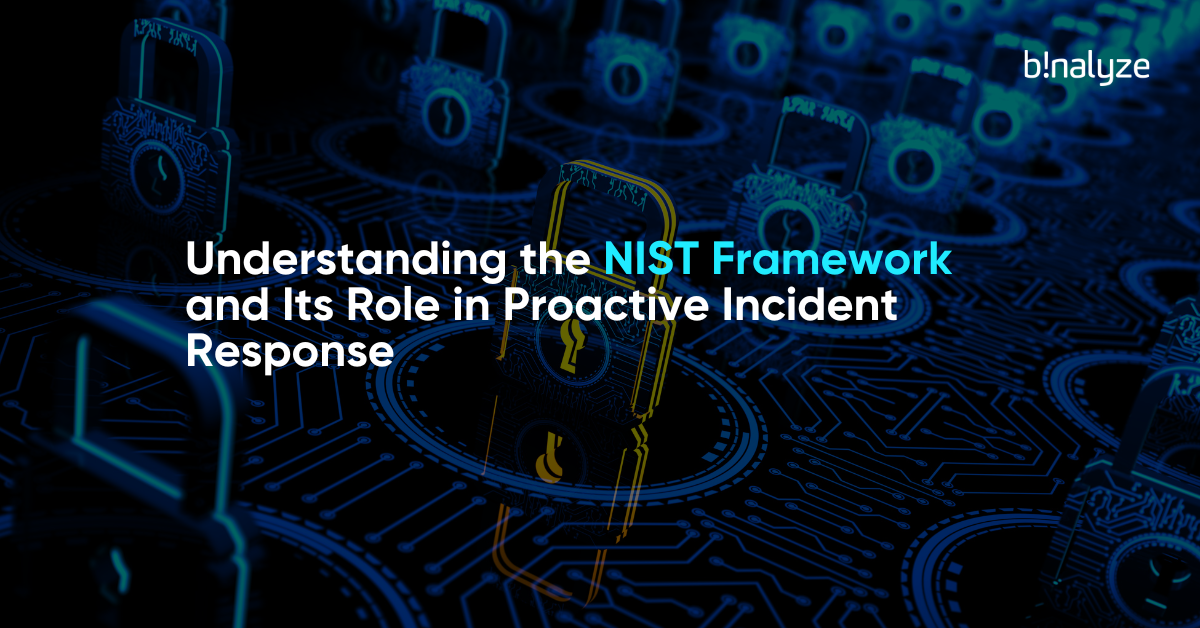2 min read
Understanding the NIST Framework and Its Role in Proactive Incident Response
![]() Kim O'Shaughnessy
:
Wed, May 1, '24
Kim O'Shaughnessy
:
Wed, May 1, '24

With cyber threats evolving rapidly, organizations must be prepared to effectively respond to incidents to minimize damage and ensure continuity of operations. This is where frameworks like the National Institute of Standards and Technology (NIST) Cybersecurity Framework come into play.
NIST Cybersecurity Framework: An Overview
The NIST Cybersecurity Framework is a set of voluntary guidelines, best practices, and standards designed to help organizations manage and mitigate cybersecurity risks. Developed by NIST in response to Executive Order 13636, the framework provides a common language for organizations to manage and communicate cybersecurity risk.
The framework consists of five core functions: Identify, Protect, Detect, Respond, and Recover. Each function is further divided into categories and subcategories, providing organizations with a structured approach to cybersecurity risk management.
Proactive Incident Response Within the NIST Framework
While the NIST Framework encompasses various aspects of cybersecurity, the respond function specifically addresses incident response. Incident response is the process of managing and mitigating the impact of cybersecurity incidents when they occur. It involves detecting, analyzing, containing, eradicating, and recovering from security breaches or compromises.
Within the NIST Framework, the Respond function is further broken down into several categories, including:
- Response Planning: Proactively developing and implementing an incident response plan that outlines roles, responsibilities, and procedures for responding to incidents.
- Communications: Establishing communication channels and protocols for sharing information internally and externally during incident response efforts.
- Analysis: Conducting a thorough analysis of security incidents to determine their scope, impact, and root causes.
- Mitigation: Implementing measures to contain and mitigate the impact of security incidents, such as isolating affected systems or deploying temporary safeguards.
- Improvement: Continuously improving incident response capabilities based on lessons learned from past incidents, proactive tests and exercises, and feedback from stakeholders.
Integrating Incident Response into Organizational Practices
Effective incident response requires a proactive approach that integrates seamlessly into an organization's overall cybersecurity and cyber resilience strategies. Here's how organizations can leverage the NIST Framework to enhance their incident response capabilities and become more proactive versus reactive:
- Assessment and Planning: Begin by assessing current incident response capabilities against the guidelines outlined in the NIST Framework. Identify gaps and develop a tailored incident response plan that aligns with the organization's objectives and risk tolerance.
- Training and Awareness: Ensure that employees are trained on their roles and responsibilities during incident response scenarios. Regular awareness training can help empower employees to recognize and report potential security incidents promptly.
- Incident Detection and Response Tools: Invest in technologies that facilitate early detection and rapid response to security incidents, such as intrusion detection systems, security information and event management (SIEM) platforms, and incident response orchestration tools.
- Automated Incident Response Tools: Invest in technologies that assist in speedy incident investigations providing forensic level visibility to take the findings and alerts from your SIEM, SOAR or E/XDR one step further.
- Collaboration and Information Sharing: Foster collaboration between internal teams, external stakeholders, and industry partners to enhance incident response capabilities. Establishing partnerships with relevant organizations and participating in information-sharing initiatives can provide valuable insights and threat intelligence.
- Continuous Improvement: Regularly review and update the incident response plan based on lessons learned from past incidents, changes in the threat landscape, incident readiness assessments and exercises, compromise assessments and threat hunting, and feedback from stakeholders. Conduct tabletop exercises and simulations to test the effectiveness of the incident response plan and identify areas for improvement
In today's cyber threat landscape, organizations must be prepared to respond swiftly and effectively to security incidents. By leveraging frameworks like the NIST Cybersecurity Framework and adopting a proactive approach to incident response, organizations can better prepare their incident response team and enhance their cyber resilience and minimize the impact of cyber attacks. Incident response is not merely a reactive process but a strategic imperative for safeguarding the confidentiality, integrity, and availability of sensitive information and critical systems.
For more information about Binalyze AIR and how it assists with automating incident response functions and significantly reduces response times, visit binalyze.com/air.










